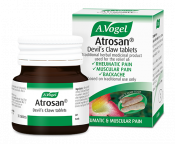What is cupping?
Cupping is an alternative Chinese medicine which involves placing suction cups made from bamboo, silicone, or glass on the body. It is a form of massage often used alongside acupuncture therapy, although it can be done on its own. Although cupping appears to be a relatively new technique it originated in ancient China and has actually been around for thousands of years!
Though primarily used for pain relief and muscle relaxation, research is now investigating the effects of cupping on conditions like fibromyalgia and arthritis. The British Cupping Society claims that cupping can be used to help a variety of conditions including anxiety, depression, skin problems, bronchial congestion (caused by asthma and allergies) as well as fertility disorders. However, further research is needed to back this up.
Professional athletes such as Olympic swimmer Michael Phelps and Andy Murray advocate the technique, believing it to be an essential part of sports recovery by helping to relieve stiffness and injury.

Fixed cupping
Fixed cupping is where the cups remain in place throughout the treatment, and are normally left in place from anywhere between 5 and 10 minutes.
Moving cupping
Moving cupping (also known as gliding cupping) is where the cups are moved during the treatment to massage the muscles. To do this the practitioner will use oil on the skin to allow the cups to move easily without uncomfortable friction.
Dry cupping
Dry cupping (or air cupping) uses a specially designed pump which is attached to the end of the cup and creates suction when applied to the skin.
Wet cupping
Wet cupping is the most similar to acupuncture. After the cup is removed, a small incision is made to the skin, and the cup is then reapplied to withdraw a small amount of blood. Special antibiotic cream is then applied to prevent infection. It is thought that this technique helps to remove toxins from the body and promotes natural healing.
How does it work?
Cupping is believed to mobilise blood flow to the skin creating a mild immune response and increasing anti-inflammatory chemicals in the body. It draws stagnant blood to the surface and improves blood circulation to the tissues. It stretches tight muscles and fascia making it a beneficial treatment for athletes.
Benefits of cupping
Pain reduction
Cupping, particularly moving cupping, has similar effects to a massage and is therefore beneficial in relieving muscular pain. Although further research investigating the effects of cupping on fibromyalgia needs to be done, one investigation found that cupping therapy was more effective at reducing pain intensity than regular care.
Releases muscle tension
Cupping softens muscle tissue and helps to relieve muscle knots which results in looser feeling, more flexible muscles. Cupping usually targets muscle groups that are prone to tightness such as the hamstrings, the adductors and the back and shoulder muscles.
Improves digestion/relieves digestive disorders
Cupping is thought to improve digestion through relaxing the whole body. Stress, anxiety, and muscle tension can lead to congestion and stagnation in the digestive system. Cupping is thought to release this stagnation, however more research is needed to back these beliefs.
Side effects of cupping
 One of the most apparent effects of cupping therapy is the odd circular bruises it can leave. It is normal to feel stiff and tender in the areas the cups have been applied to, and these symptoms normally last a day or two. Unless you’ve had wet cupping, I’d recommend applying Arnica gel to the bruises to help reduce the tenderness and speed up the recovery. Arnica gel is a natural painkiller made from arnica flowers, it works just as well as painkillers like ibuprofen and doesn’t have any of the side effects.
One of the most apparent effects of cupping therapy is the odd circular bruises it can leave. It is normal to feel stiff and tender in the areas the cups have been applied to, and these symptoms normally last a day or two. Unless you’ve had wet cupping, I’d recommend applying Arnica gel to the bruises to help reduce the tenderness and speed up the recovery. Arnica gel is a natural painkiller made from arnica flowers, it works just as well as painkillers like ibuprofen and doesn’t have any of the side effects.
Although there has been little scientific research carried out on the internal benefits of cupping, many, particularly athletes, reap the muscular and pain management benefits of the therapy.
1 http://www.acos.org/articles/chinese-medicine-cupping/
2 http://www.webmd.com/balance/guide/cupping-therapy#2
3 http://uk.businessinsider.com/michael-phelps-red-circle-marks-cupping-therapy-benefits-olympics-2016-8
4 http://www.therapy-directory.org.uk/articles/cupping.html
5 https://www.massagemag.com/use-massage-cups-to-unlock-abdominal-stagnation-11505/





 Looking for a treatment to relieve pain in conditions such as muscle aches or pains, stiffness, rheumatic pain or after sporting injuries?
Looking for a treatment to relieve pain in conditions such as muscle aches or pains, stiffness, rheumatic pain or after sporting injuries?

